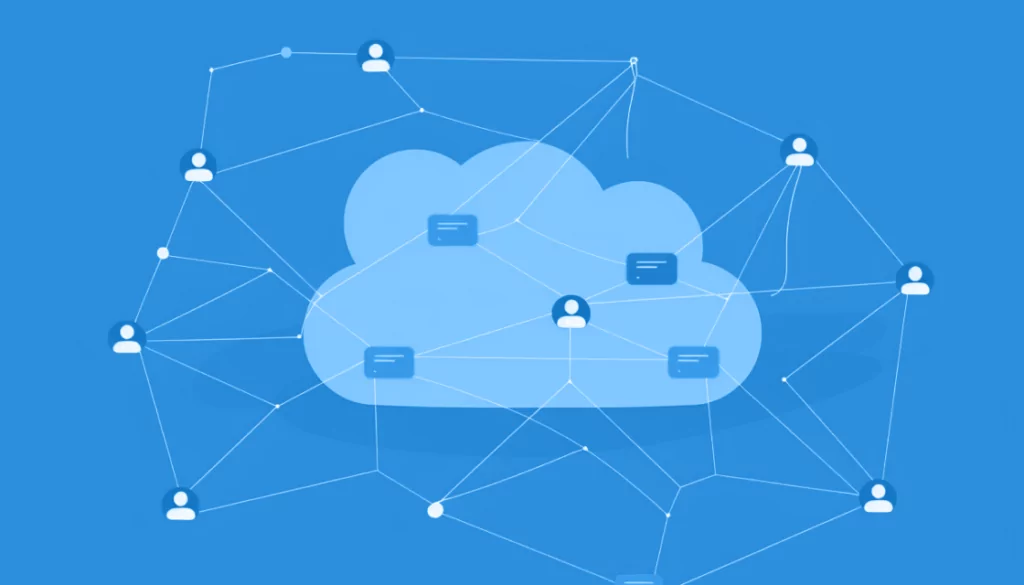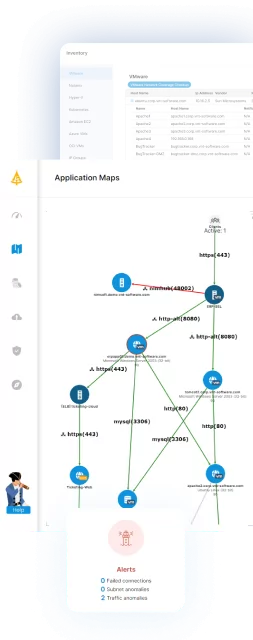What Is Business Continuity Management?
Business continuity management (BCM) is a process that ensures critical business functions can continue during and after a disruption. It involves identifying potential risks and developing strategies to minimize their impact on operations. BCM aims to maintain services and products, protect reputation, and ensure the organization resumes its activities promptly.
BCM includes disaster recovery, crisis management, and incident response. Unlike reactive solutions, BCM is preventive, focusing on minimizing risk exposure and ensuring resilience. This approach requires collaboration among various departments to identify critical processes, assess risks, and devise continuity plans.
Table of Contents
Toggle- What Is Business Continuity Management?
- Why Business Continuity Management Matters
- The BCM Lifecycle
- Tips from the Expert
- What Is the Role of Leadership in Business Continuity Management?
- 6 Best Practices for Building and Maintaining a Resilient BCM Program
- Supporting Business Continuity with Faddom Dependency Mapping
Why Business Continuity Management Matters
Financial and Operational Benefits
BCM offers financial benefits by minimizing the costs associated with business interruptions. By ensuring rapid response and recovery, BCM reduces downtime and operational issues, preserving revenue streams and maintaining market presence.
Operationally, BCM helps improve efficiency and resilience. Organizations gain an understanding of their processes, leading to optimized workflows and reduced inefficiencies. This ensures that resources are available when needed, helping to navigate through crises.
Legal and Regulatory Considerations
Organizations must align their BCM efforts with applicable legal and regulatory frameworks to avoid penalties and maintain operational legitimacy. Many industries, like finance and healthcare, have continuity requirements to protect sensitive information and operational capability. Non-compliance can result in severe financial penalties and reputational damage.
Addressing regulatory demands within BCM frameworks is essential. This involves regular updates to continuity plans, ensuring they meet evolving legal standards. Compliance checks and audits further reinforce an organization’s dedication to maintaining both operational and legal integrity.
Addressing Vendor and Insurance Requirements
BCM extends to managing vendor relationships and insurance coverages, which are critical for mitigating external risks. Assessing vendors’ continuity plans ensures supply chain resilience and adherence to performance standards during disruptions.
Precise BCM planning impacts insurance costs. Demonstrating continuity strategies to insurers can reduce premiums and improve claim payouts during interruptions. Insurers prefer clients who actively manage operational risks, viewing them as lower-risk entities, thereby fostering competitive insurance negotiations.
The BCM Lifecycle
1. Conducting Business Impact Analyses
Conducting a business impact analysis (BIA) is the first step in developing an effective BCM plan. BIAs assess the impact of disruptions on critical business functions, identifying processes vital to sustained operation. This analysis provides key insights into dependency chains and prioritizes recovery efforts to mitigate potential losses.
BIAs must be thorough and repeatable, involving input from various departments to capture all areas of potential impact. By creating detailed profiles of departments, dependencies, and required resources, BIAs offer an overview of vulnerabilities, supporting informed decision-making and strategic continuity investments.
2. Developing Risk Mitigation and Recovery Strategies
Risk mitigation and recovery strategies are central to BCM, aimed at reducing the impact of events and ensuring swift recovery. This involves identifying potential threats and developing appropriate measures to manage them. Strategies may include alternative site operations, supply chain adjustments, or IT disaster recovery plans.
Tailored strategies should consider the needs of the organization, ensuring flexibility and adaptability. Regular testing and refinement of these strategies are essential, ensuring they remain effective amidst evolving risks and organizational growth. Training ensures that all staff members know their roles in implementing these plans efficiently.
3. Crisis Communication and Reputation Management
Effective crisis communication is vital in maintaining organizational reputation during disruptions. A communication strategy ensures accurate, timely information reaches stakeholders, preventing misinformation and preserving trust. This involves predefined roles, a clear flow of information, and designated spokespeople to manage public relations.
Including reputation management within BCM frameworks emphasizes transparency and ethical handling of crises. By anticipating potential reputation impacts and preparing responses, organizations can mitigate negative perceptions and demonstrate resilience, fostering stakeholder confidence and engagement during challenging times.
4. Ongoing Plan Documentation and Review
Regular IT documentation and review of BCM plans are essential for maintaining their relevance. Documentation reflects current strategies, protocols, and contact lists critical for crisis response. Regular updates ensure plans evolve with business changes, such as new processes or technology integrations, improving readiness.
Plan reviews allow for continuous improvement, integrating lessons from simulations and past incidents. This approach enables the organization to address emerging threats promptly, ensuring the BCM plan remains aligned with the strategic objectives and protects operations from future disruptions.

Lanir specializes in founding new tech companies for Enterprise Software: Assemble and nurture a great team, Early stage funding to growth late stage, One design partner to hundreds of enterprise customers, MVP to Enterprise grade product, Low level kernel engineering to AI/ML and BigData, One advisory board to a long list of shareholders and board members of the worlds largest VCs
Tips from the Expert
In my experience, here are tips that can help you better adapt to the topic of application dependency mapping (ADM):
Implement a phased approach
Start with critical applications and their dependencies before expanding to less critical ones. This helps manage complexity and prioritize key areas first.
Regularly update dependency maps
Ensure maps are continuously updated to reflect changes in the environment. Automate this process where possible to maintain accuracy.
Integrate with CI/CD pipelines
Embed ADM tools within your CI/CD workflows to identify potential dependency issues early in the development lifecycle, reducing downstream problems.
Conduct dependency audits
Periodically review and audit application dependencies to identify outdated, redundant, or vulnerable components, ensuring they are replaced or upgraded as needed.
Leverage AI and machine learning
Use AI-driven ADM tools to predict and identify hidden dependencies and potential bottlenecks, enhancing overall visibility and performance.
What Is the Role of Leadership in Business Continuity Management?
Leadership plays a central role in driving and sustaining a BCM program. Executives and senior managers are responsible for setting the tone at the top by prioritizing resilience as a strategic objective. Their endorsement ensures BCM receives the necessary resources, visibility, and organizational commitment to function effectively.
Leaders guide the establishment of BCM governance structures and assign accountability for continuity planning across departments. They help align BCM goals with broader business strategies, ensuring continuity efforts support long-term objectives. This includes integrating continuity considerations into decision-making processes, such as new product launches or geographic expansions.
6 Best Practices for Building and Maintaining a Resilient BCM Program
1. Define Objectives, Recovery Time, and Recovery Point Targets
Establishing clear objectives and recovery targets is fundamental in BCM planning. Objectives align BCM strategies with organizational goals, focusing on critical process recovery. Defining recovery time objectives (RTO) and recovery point objectives (RPO) determines acceptable downtime and data loss, guiding strategic prioritization.
This clarity assists in resource allocation, ensuring that essential functions are restored promptly during disruptions. Regular review of these targets as operations evolve ensures they remain relevant and achievable, providing a benchmark for continuity efforts. Accurate definitions and practical targets are crucial for an effective BCM strategy.
2. Leverage Application Dependency Mapping to Gain Visibility of Existing Assets
Application dependency mapping identifies relationships between systems, applications, and services that support critical business functions. By visualizing these interdependencies, organizations can pinpoint single points of failure and assess the cascading effects of disruptions. This clarity enables targeted risk mitigation and enhances the prioritization of recovery efforts based on actual operational impact.
Automated tools can dynamically map these dependencies in real time, adapting to infrastructure changes and configuration updates. This continuous visibility ensures BCM plans reflect the current state of the IT environment, reducing blind spots. Incorporating these insights into continuity strategies allows for more efficient response coordination and quicker restoration of critical services.
3. Train and Test Regularly, Involving Cross-Functional Teams
Regular training and testing are vital for BCM efficacy, ensuring readiness and revealing plan weaknesses. Cross-functional participation is crucial, promoting collaboration and sharing lessons across departments. Regular drills simulate real incidents, building confidence and competence in execution across teams.
Frequent testing familiarizes employees with their roles and responsibilities during a crisis, reducing uncertainty. These exercises enable iterative improvements, with feedback loops refining plans and procedures. Through consistent training and testing, organizations foster an environment of preparedness, improving resilience and response capabilities.
4. Measure Performance and Continuously Improve
Continuous performance measurement is key to BCM success, identifying strengths and areas for improvement. KPI monitoring evaluates plan effectiveness, guiding refinement efforts. Regular assessment ensures strategies remain aligned with business changes and emerging threats, fostering adaptive, resilient plans.
Feedback from drills and incidents informs iterative improvements, ensuring the BCM program evolves. Adaptive planning based on performance metrics improves preparedness, efficiency, and response capability. Regular reviews and updates embedded in an improvement cycle ensure operational resilience amidst an ever-changing risk environment.
5. Integrate AI for Predictive Risk Analysis
Integrating artificial intelligence (AI) into BCM offers predictive insights into potential risks, improving decision-making and preparedness. AI enables the analysis of large datasets, uncovering patterns and trends that traditional methods might miss, allowing for early risk identification and proactive strategy development.
Through AI-driven predictions, organizations can optimize resource allocation and response strategies, reducing downtime and mitigating impacts. The continual application of AI in BCM improves accuracy and responsiveness, fostering an agile continuity plan that anticipates and adapts to emerging threats.
6. Scale BCM for Remote and Hybrid Work Environments
Adapting BCM to remote and hybrid work models addresses new complexities in continuity planning. The rise of distributed workforces necessitates strategies accommodating diverse operational needs, securing remote access infrastructures, and managing dispersed teams during disruptions.
BCM plans should include communication protocols, data protection measures, and technology redundancy to support operation across varying environments. Regular training keeps remote employees prepared for crisis scenarios, ensuring consistency in response and recovery efforts. Scaling BCM for these dynamics optimizes agility and maintains business coherence.
Supporting Business Continuity with Faddom Dependency Mapping
Faddom enhances business continuity management by delivering continuous, agentless visibility into application and infrastructure dependencies across on-premises, cloud, and hybrid environments. Its real-time, automatically updated maps reveal critical relationships and potential failure points, helping organizations design BCM plans that reflect their actual operational landscape.
With Faddom, IT teams can prioritize recovery efforts, reduce downtime, and coordinate more effectively across departments. This makes continuity planning not just a compliance exercise, but a strategic advantage that strengthens resilience and ensures the business is ready for any disruption.







